North American A-5 Vigilante. Bomber and reconnaissance aircraft for the United States Navy
In the middle of the XX century. in the deck aviation The US Navy included combat aircraft of various classes. The development of such an aircraft fleet soon led to the emergence of the North American A-5 Vigilante supersonic deck bomber, capable of carrying a nuclear weapon... However, in the future, the development concept fleet changed, and the bombers had to be rebuilt for a new role.
Initiative and order
In 1954, North American Aviation (NAA) began a theoretical study of a promising carrier-based aircraft of an unusual appearance. In one design, it was proposed to combine supersonic speed and medium range, as well as the ability to carry nuclear weapons. The preliminary project confirmed the possibility of creating such a machine, but showed the need for a number of advanced and bold solutions.
The initiative NAA project interested the Navy. They came up with additional requirements, and the development company took them into account in further work. As a result of these processes, in July 1955 a contract was issued for the development of a full-fledged project and the construction of a full-size model. This work took a little over a year, and in September 1956 they signed an agreement on the construction of two prototypes for flight tests.
In accordance with the nomenclature of the time, the promising bomber received the designation A3J and the name Vigilante ("Vigilant"). The prototypes were indexed XA3J-1. For the first series, a similar name was retained, but the "experimental" letter "X" was removed from it. In 1962, a new designation system was introduced, in which the first modification of the bomber was renamed A-5A Vigilante.
Construction of two XA3J-1 prototypes continued until the summer of 1958. On the last day of August, one of them made its maiden flight. Flight tests took several months, did without serious malfunctions and accidents, and also confirmed all the advantages of the new machine. At the same time, certain shortcomings were shown that needed to be corrected before starting the series. It should be noted that in 1959 one of the prototypes crashed - but this did not affect the course of the project as a whole.
The first serial contract for 55 aircraft was signed in January 1959. At the end of the year, the NAA began handing over the finished aircraft. The Navy began to master the technology, and also began to determine the maximum characteristics. In 1960-61. pilots of naval aviation have set several national and world records.
So, on December 13, 1960, pilots Leroy Heath and Larry Monroe with a load of 1 tonne ascended to an altitude of almost 27,9 km. It is curious that the practical ceiling of the A3J-1 did not exceed 16 km, and the record had to be set, moving along a ballistic trajectory due to preliminary acceleration. This achievement remained unrivaled until the mid-seventies.
High degree of novelty
The A3J-1, or A-5, was an all-metal twin-engine high-wing aircraft with a pointed fuselage nose and bucket-type side air intakes. The plumage was used with an all-turning stabilizer and one keel. The nose, wing and keel had folding mechanisms. A similar look, reminiscent of some other cars of that period, was accompanied by a number of important and interesting innovations.
In addition to the usual steel, titanium and aluminum-lithium alloys were actively used in the airframe design. Some elements are gold plated to reflect heat. An unusual fuselage layout was used. In the center and tail of the fuselage were placed the so-called. linear bomb bay: cylindrical volume with access through the back cover. At the same time, the fuselage was reinforced to match the loads on the hook when landing with an aerofiner.
The swept wing of the aircraft received large-span flaps with a boundary layer blowing system. The ailerons were absent. Roll control was carried out by spoilers and differential deviation of the horizontal tail. The planes were controlled by a fly-by-wire control system. Hydraulics and cable routing were redundant.
The power plant included two General Electric J79-GE-8 engines with a maximum thrust of approx. 4,95 thousand kgf and afterburner more than 7,7 thousand kgf. For the engines and afterburners, two separate fuel systems were used, connected to common tanks. The bucket air intake of the engine had a movable wedge, controlled by automatic equipment.
The AN / ASB-3 sighting and navigation system was developed for the A1J-12. For the first time in American practice, such a system was equipped with a digital computer. Also on board were a multi-mode radar, an optoelectronic station, an inertial navigation system and even a full-fledged Pilot's Projected Display Indicator on the windshield. In terms of avionics, the Vigilante was one of the most advanced aircraft of its time.
The high degree of automation made it possible to reduce the crew to two people. The pilot and navigator-operator were located in the cockpit one after another in North American HS-1A ejection seats.
For the linear cargo compartment, a combat load was developed with the unofficial name Stores Train. A nuclear bomb of permissible dimensions was connected to two cylindrical fuel tanks, after which the entire "train" was placed in a bomb bay, closed by a tail fairing. It was proposed to spend fuel from the cargo compartment in the first place. Above the target, the bomber had to throw out the entire assembly.
Provided for the possibility of external suspension of various weapons under the wing. Depending on the task at hand, bombs of different types or suspended tanks could be placed on the pylons.
The A3J-1 / A-5A was one of the largest and heaviest carrier-based aircraft in the United States. It had a length of 23,3 m with a wingspan of 16,16 m. The dead weight of the structure reached 14,9 tons, the maximum take-off weight was 28,6 tons. The bomber was quite difficult from the point of view of storage and operation on aircraft carriers. The foldable units made work a little easier.
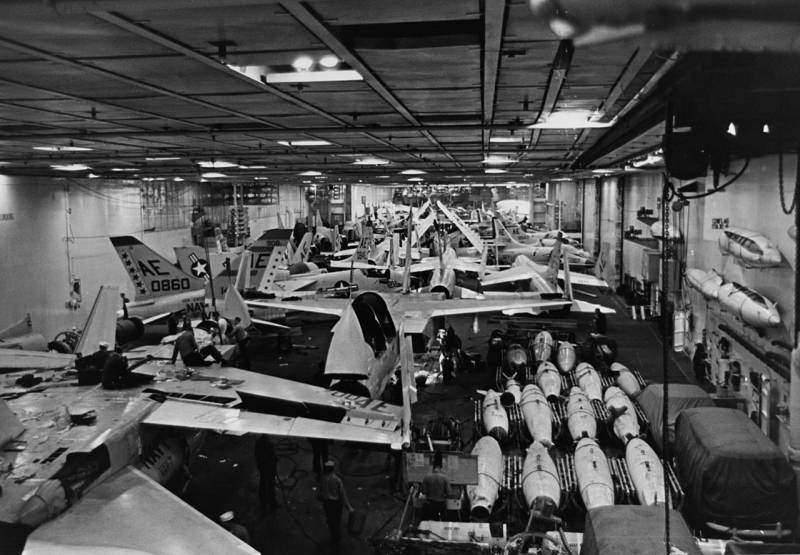
A-5A Vigilante bombers in the hangar of the aircraft carrier USS Enterprise (CVAN-65), September 1964. These aircraft will later be converted into reconnaissance aircraft.
The maximum speed of "Vigilant" at altitude was determined at 2100 km / h, which corresponded to M = 2. The combat radius was 1800 km. Ferry range - more than 2900 km. The service ceiling reached 15,9 km. It was noted that when the takeoff weight is limited, the bomber shows good maneuverability and controllability. At the same time, the landing speed remained high, which led to certain risks.
In the process of development
In parallel with the tests of the experienced XA3J-1, the next modification of the aircraft was being developed - the XA3J-2 or A-5B. This project involved a redesign of the wing to improve the main characteristics. The fuselage was changed to increase the volume of the fuel tanks. As a result of all the changes, the ferry range with full fuel and four additional tanks (in the fuselage and under the wing) almost doubled. We also managed to expand the range of compatible weapons.
However, the prospects for the new modification were in question - as well as the future of the base car. At the turn of the fifties and sixties, the Pentagon was redefining the role and functions of the Navy as part of the nuclear force. As a result of these processes, several key decisions were made, and one of them provided for the abandonment of specialized carrier-based bombers with nuclear and conventional weapons.
In 1963, the construction of the A-5A / B bombers was canceled. By this time, the industry had built and delivered more than 55 "A" version aircraft and up to 18 newer "B" aircraft. Several heavy attack squadrons (Heavy Attack Squadron or VAH) as part of the naval aviation were equipped with this technique. Combat pilots managed to master the new technology and have repeatedly used it in various combat training activities.
Not wanting to lose a successful aviation platform, the Navy ordered the production of reconnaissance aircraft based on the bomber. Such a project was previously worked out under the designation YA3J-3P, and the vehicles entered service with the RA-5C index. The Navy ordered 77 of these aircraft, of which 69 were built. Later, 81 aircraft were re-equipped from the existing A-5A / B - experimental and serial. This number includes an additional order for 36 aircraft, intended to replenish combat and non-combat losses.
In the RA-5C project, the tail cargo compartment was given under a container of reconnaissance equipment. It accommodated aerial cameras of several types with different shooting modes, side-looking radar, electronic warfare equipment and a fuel tank. As the service continued, the composition of such equipment changed several times. The equipment was controlled from the workplace of the navigator-operator. The entire complex of improvements led to a significant increase in weight, which was compensated for by the new GE J79-10 engines.
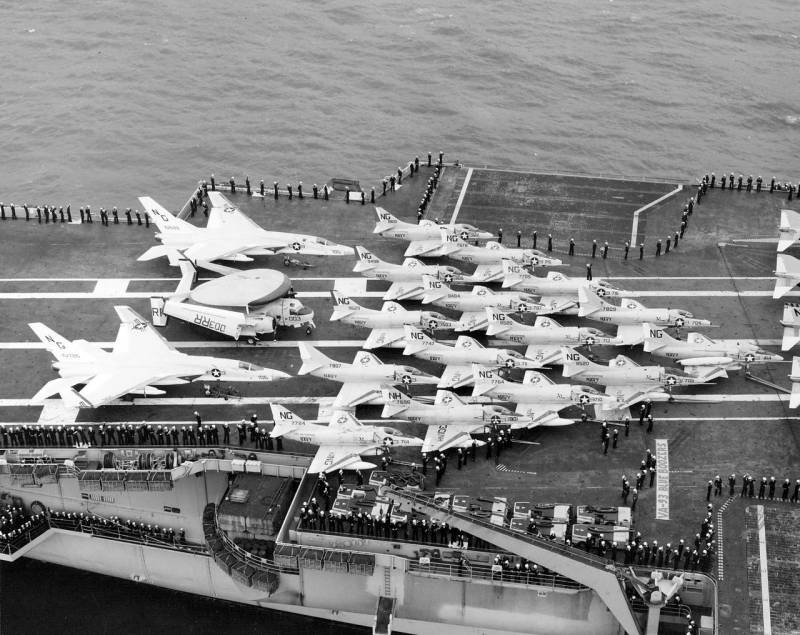
Part of the Enterprise air group in June 1966. Behind the other vehicles are a pair of Vigilantes in reconnaissance configuration
Air reconnaissance
Reconnaissance aircraft were produced and rebuilt until the end of the sixties. In parallel with this, there was a reorganization of combat units. The existing bomber squadrons on the Vigilante were renamed the Reconnaissance Attack Squadron or RVAH. We also created several new divisions of this kind. In total, the US Navy had 10 RVAH squadrons. Nine could carry out combat missions, one more was training.
Since August 1964, reconnaissance squadrons have been permanently involved in the naval operations in Vietnam. They worked on different aircraft carriers and regularly replaced each other. It was the RA-5C that became one of the main tools for collecting data on the tactical situation and enemy positions.
In general, the combat use of RA-5C reconnaissance aircraft was successful, but not without losses. In total, we had to write off approx. 30 cars. One was shot down in an air battle, three more were lost from anti-aircraft missiles. Artillery chalked up 14 scouts. The rest were included in the list of non-combat losses - due to various breakdowns, accidents, etc. In particular, three bombers burned down on July 29, 1967 in a fire aboard the aircraft carrier USS Forrestal (CV-59).
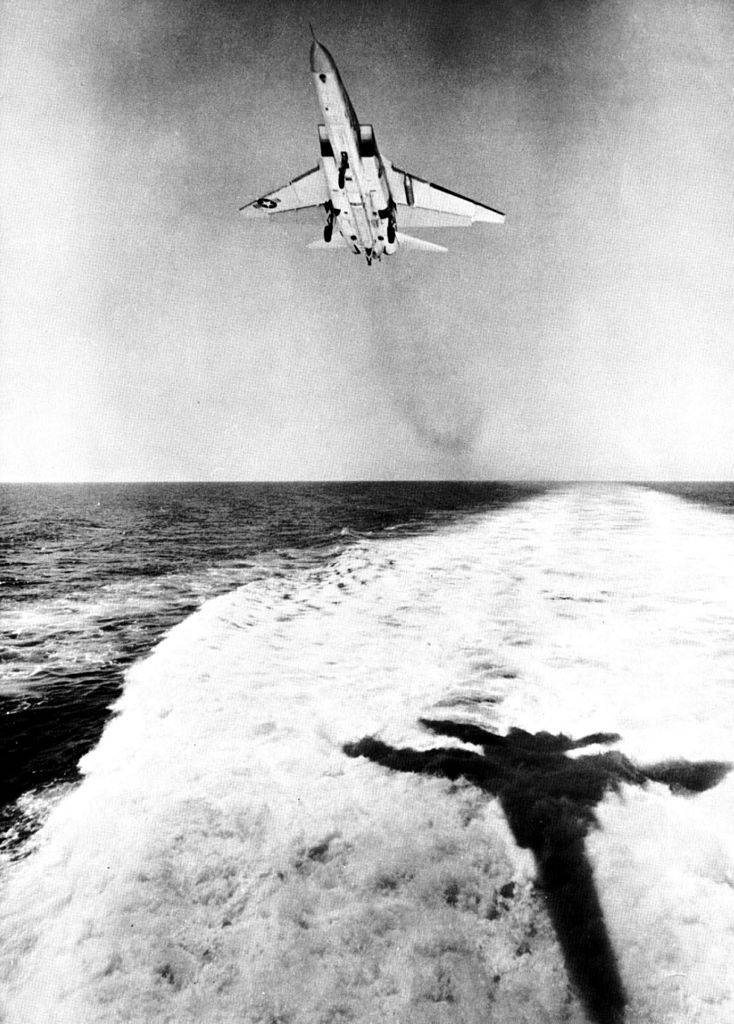
RA-5C is landing
In 1974, the command decided to write off the existing RA-5C Vigilante reconnaissance aircraft due to moral and physical obsolescence. In the same year, the first of the existing squadrons was disbanded. The last unit served until the beginning of 1980, after which it was also disbanded. In connection with the abandonment of the RA-5C, reconnaissance tasks were transferred to newer aircraft of various modifications.
The existing Vigilante aircraft were decommissioned as unnecessary. More than a dozen cars were later donated to various museums. A few dozen more were sent for recycling, while others went to long-term storage. Most of such equipment has by now been disassembled or turned into "tactical objects" at the training grounds.
With a controversial reputation
In total, approx. 170 North American A3J / A-5 Vigilante aircraft of all modifications. The total number of scouts, built from scratch or converted from bombers, reached 140 units. This allowed the creation of a large number of specialized squadrons, which played an important role in the development of US naval aviation and in expanding the functions of the Navy.
Vigilante has earned a controversial reputation. They were praised for their high flight performance and combat capabilities, which positively influenced the capabilities of aircraft carrier groups. In addition, the aircraft showed a high modernization potential - after the restructuring, they continued to serve, retaining all their advantages.
At the same time, the aircraft was quite difficult to operate on aircraft carriers. Difficulties and problems were associated with the dimensions of the car, with the complexity of piloting during takeoff and landing, etc. The high cost of operation was noted in comparison with other equipment of the Navy. Advanced developments, such as a digital on-board computer or the original combat load system, did not always show the required reliability. For example, there are known cases when, at the start of a catapult, a "train" with tanks and a bomb tore off its place.
Nonetheless, the North American A-5 / RA-5C Vigilante found a place in the US naval aviation and remained in it for almost two decades, performing different tasks. In addition, such aircraft have left their mark in stories American carrier-based aviation, and at the same time directly influenced the path of its further development - although these processes continued without specialized bombers.
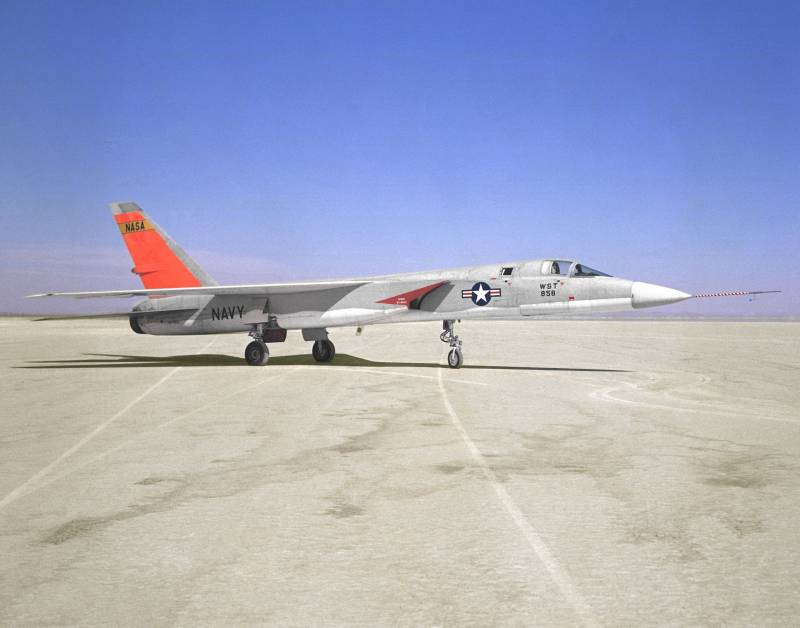
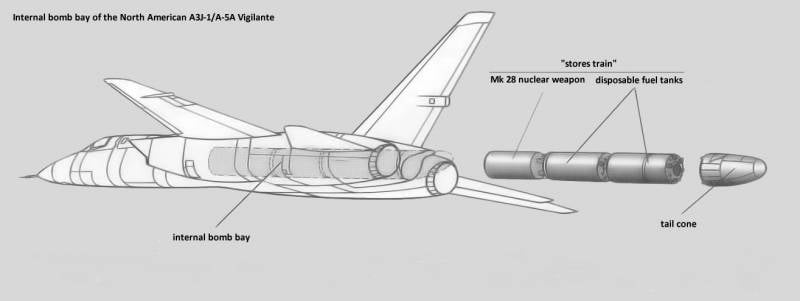
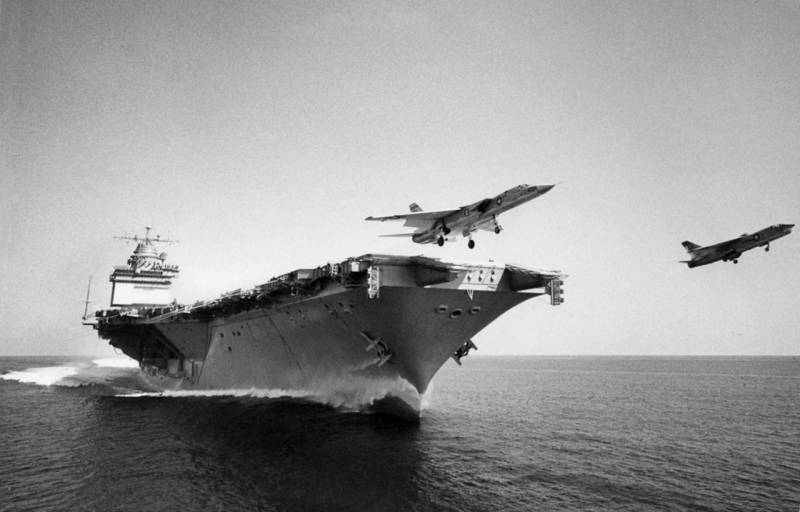
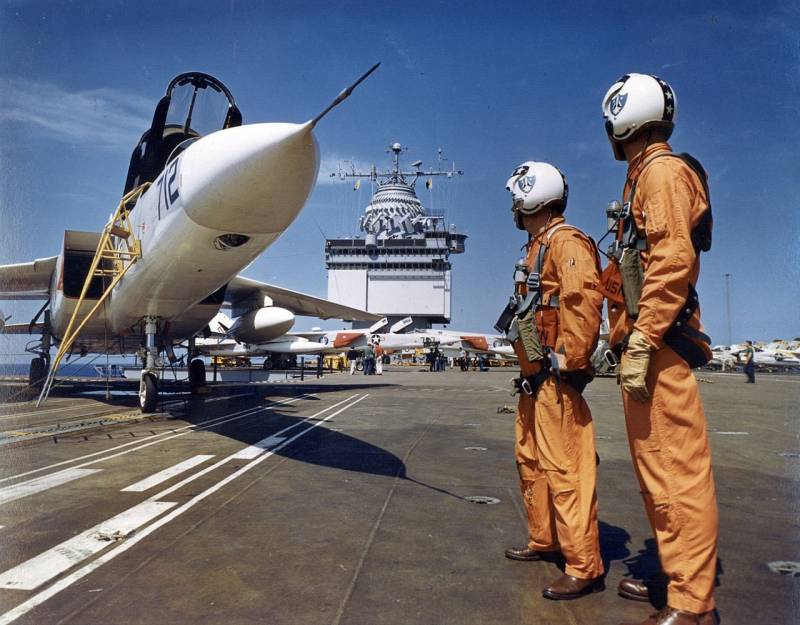
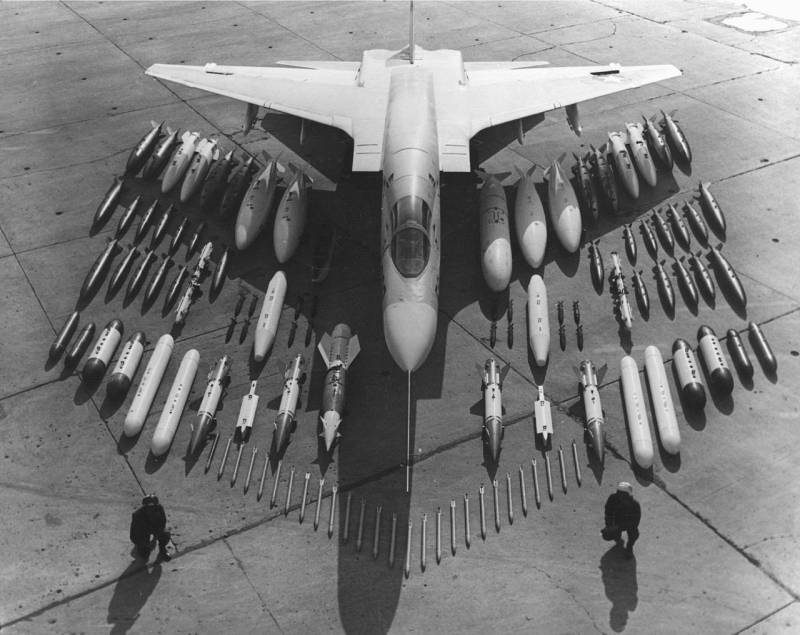
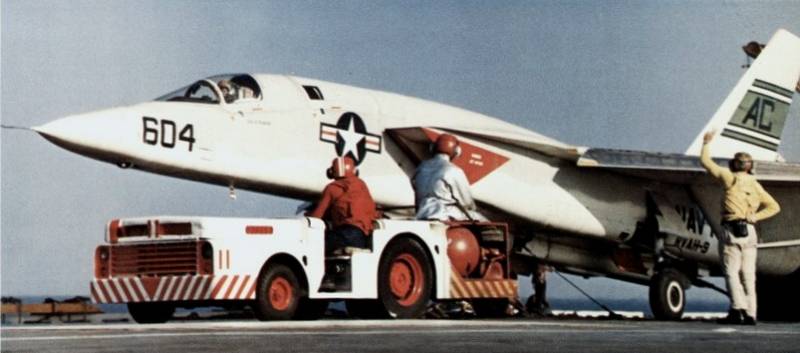
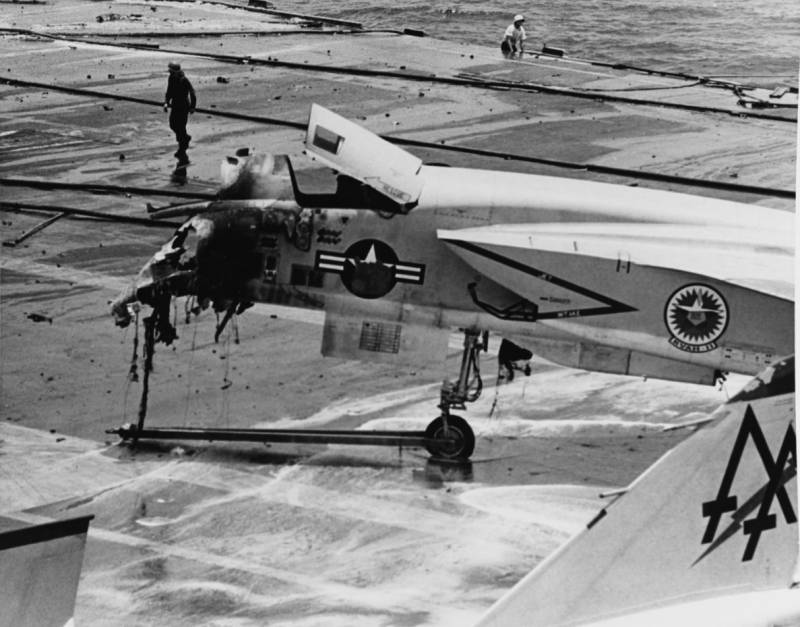
Information